Personalized solution
that considers your hair condition
VIEW Hair
Transplant
VIEW Hair Transplant
Your form has been submitted
Thank you %NAME% for submitting your inquiry.
We have received your answers. We will contact you asap.
We faced problems while connecting to the server or receiving data from the server. Please wait for a few seconds and try again.
If the problem persists, then check your internet connectivity. If all other sites open fine, then please contact the administrator of this website with the following information.
TextStatus: undefined
HTTP Error: undefined
Some error has occured.
Personalized solution
that considers your hair condition
VIEW Hair
Transplant
VIEW Hair Transplant
*Image Model


 Surgery
Surgery Anesthesia
Anesthesia Follow-up
Follow-up Stitch
Stitch Shampooing
ShampooingWhen it comes to hair transplants, VIEW is an art!
At VIEW, hair transplantation is more than just filling in thinning areas.
We carefully design each procedure by considering the type of hair loss, individual facial structure, angles, and proportions.
Our approach ensures that transplanted follicles are properly placed and maintained, promoting healthy
At VIEW, hair transplantation is more than just
filling in thinning areas.
We carefully design each procedure by considering
the type of hair loss, individual facial structure,
angles, and proportions. Our approach ensures that
transplanted follicles are properly placed and
maintained, promoting healthy


VIEW Hair Transplant
is ideal for those who:
· Want natural results and fast recovery
· Desire high-volume transplantation in specific areas
· and preferred shapes
· Seek dense and voluminous hair restoration
· Prefer minimal scarring and high graft survival rates
· Want natural results and fast recovery
· Desire high-volume transplantation in specific
areas and preferred shapes
· Seek dense and voluminous hair restoration
· Prefer minimal scarring and
high graft survival rates
VIEW HAIR TRANSPLANT
High Graft Survival RateHigh Graft
Survival Rate
Optimal DensityOptimal
Density
Safe Anesthesia
System
Hospital-Grade
Medical Equipment & FacilitiesHospital-Grade
Medical Equipment &
Facilities
Natural-Looking
Results
Hidden Scar Suturing
For minimal visible scarringHidden Scar Suturing
For minimal visible
scarring
Strict Infection ControlStrict
Infection Control
Personalized
Aftercare
VIEW HAIR TRANSPLANT
The primary cause of male hair loss is the hormone DHT(Dihydrotes-
tosterone), which shrinks hair follicles and leads to hair shedding.
Additionally, stress, alcohol consumption, smoking,
poor diet, improper hair products, and aging can contribute to the
development or worsening of male pattern baldness.
The primary cause of male hair loss is the hor-
mone DHT(Dihydrotestosterone),
which shrinks hair follicles and leads to hair
shedding. Additionally, stress, alcohol consump-
tion, smoking, poor diet, improper hair products,
and aging can contribute to the development or
worsening of male pattern baldness.
DHT (Dihydrotestosterone) is a male hormone that is
produced when testosterone interacts with the
enzyme 5-alpha-reductase. This hormone can shrink
hair follicles, leading to miniaturization of the hair and
eventually causing hair loss.
DHT (Dihydrotestosterone) is a male
hormone that is produced when testos-
terone interacts with the enzyme 5-al-
pha-reductase. This hormone can shrink
hair follicles, leading to miniaturization of
the hair and eventually causing hair loss.
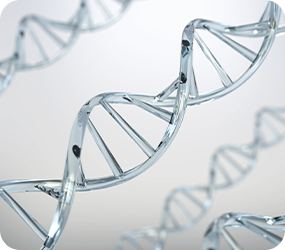
Male Hormone & Genetics
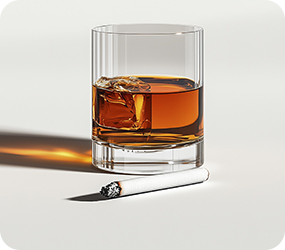
Alcohol & tobacco use

Chronic Fatigue & Stress

Excessive Dieting
The Primary causes of female hair loss include hormonal changes,
Severe stress, excessive dieting, and nutritional deficiencies resulting
from unbalanced lifestyle habits. In many women, one of the earliest
signs of hair loss is hair miniaturization, where the hair becomes thinner
and less dense.
The Primary causes of female hair loss include
hormonal changes, Severe stress, excessive
dieting, and nutritional deficiencies resulting
from unbalanced lifestyle habits.
In many women, one of the earliest signs of
hair loss is hair miniaturization, where the hair
becomes thinner and less dense.
Hair miniaturization is an early symptom of hair loss in
which hair strands become noticeably thinner without
natural causes like aging. When miniaturization pro-
gresses, hair loss typically begins around the part line
and crown area.
Hair miniaturization is an early symptom
of hair loss in which hair strands become
noticeably thinner without natural
causes like aging.
When miniaturization progresses, hair
loss typically begins around the part line
and crown area.

Genetics & Hormonal Changes

Pregnancy & Childbirth

Chronic Fatigue & Stress

Excessive Dieting
VIEW HAIR TRANSPLANT
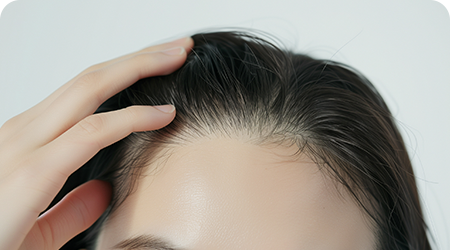
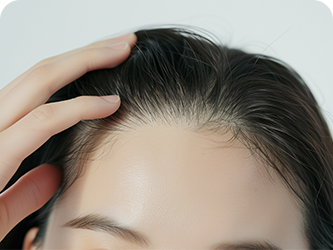
Hairline
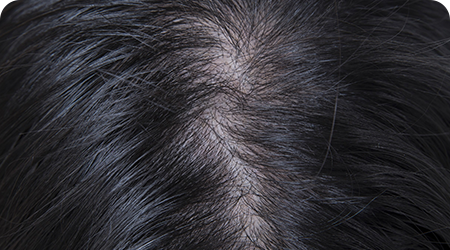
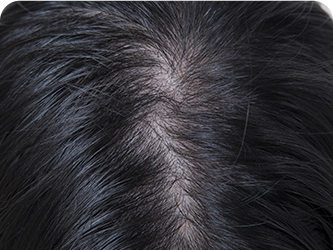
Part Line
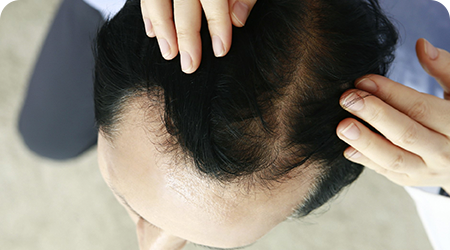
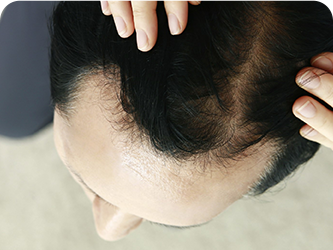
M-shaped Area
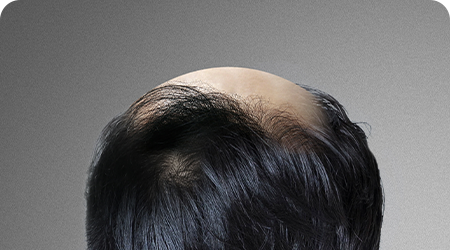

U-shaped Hairline
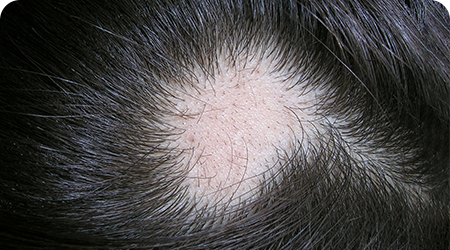
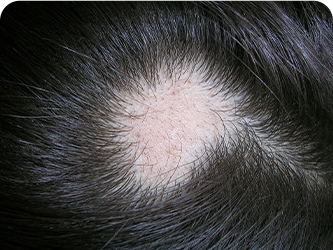
O-shaped Hair Loss
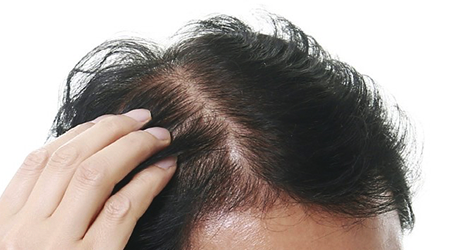
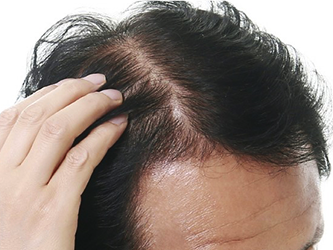
Mixed Type
VIEW HAIR TRANSPLANT
1. Follicular Unit
Transplantation
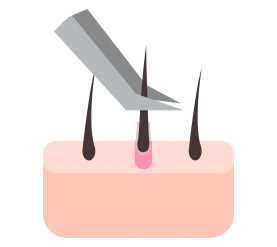
The method of transplanting entire
unit, which includes the hair and its
root structure, is called Follicular Unit
Transplantation (FUT).
Compared to single-hair grafting,
this technique allows for the efficient
transfer of a larger number
of hairs in one session.
The method of trans-
planting whole follicular
units, enbling more ef-
ficient hair transfer than
single-hair grafting.
2. Follicular Unit
Extraction
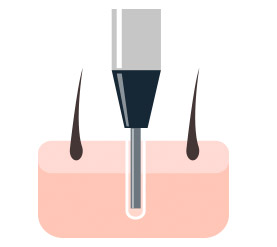
Without shaving or scalp incision,
hair follicles are extracted in units
from the occipital (back of the head)
or temporal (side) areas using a
specialized punch tool.
The grafts are then implanted using
a slit or implanter device, without
any incision, allowing for faster
recovery and minimal scarring.
This method extracts
follicular units without
shaving or scalp incision
and transplants them to
thinning areas.
No cutting means faster
recovery.
3. Incisional
Method3. Incisional Method
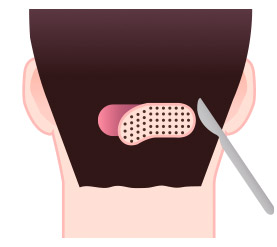
This method involves making an inci-
sion that extends from the side of the
head to the back, typically around 23
to 24 cm in length.
A strip of scalp tissue is removed,
and hair follicles are visually identified
and harvested for transplantation.
Through an incision, a
strip of scalp is taken,
allowing follicles to be
visually identified and
quickly harvested for
high-volum
transplantation.
4. Combination
Method

This method combines both
techniques to extract hair follicles,
which are then transplanted.
It is designed to maximize graft
yield and adapt to the patient’s
specific hair loss pattern and
donor availability
This method combines
both non-incisional and
incisional techniques to
extract and transplant
hair follicles.
VIEW HAIR TRANSPLANT
At VIEW Plastic Surgery, we offer a dedicated recovery room for post-transplant care,
where our in-house dermatology team provides a structured aftercare system.
This helps accelerate the healing of damaged tissue and minimizes concerns about scarring.
At VIEW Plastic Surgery, we offer a dedicated re-
covery room for post-transplant care,
where our in-house dermatology team provides a
structured aftercare system.
This helps accelerate the healing of damaged tissue
and minimizes concerns about scarring.

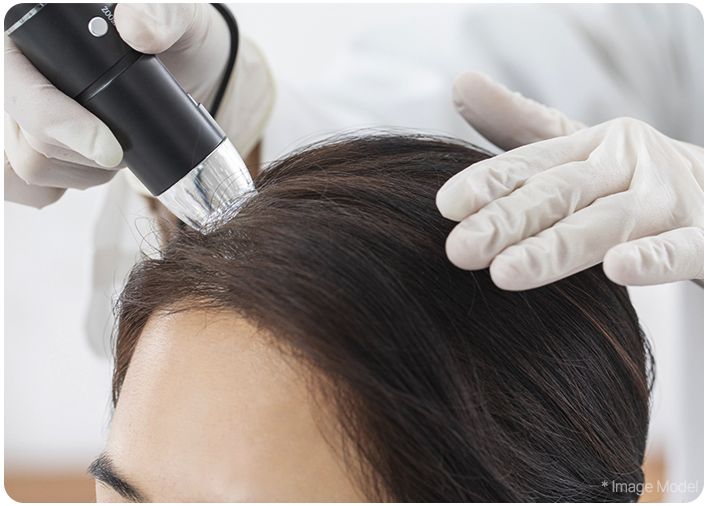
In-Depth
ConsultationIn-Depth
Consulta-
tion Assessment of facial structure, hair loss pattern,
and overall condition.
Pre-Surgery
TestsPre-
Surgery
Tests Blood tests and PSA test are conducted to ensure
patient safety before surgery.Blood tests and PSA test are
conducted to ensure patient safety
before surgery.
Design & Surgical
PlanningDesign &
Surgical
Planning Facial proportions and transplant area are
measured to create a personalized design.Facial proportions and transplant area
are measured to create a personal-
ized design.
Follicle
ExtractionFollicle
Extraction Hair follicles are harvested using the most suitable
technique for each patient.Hair follicles are harvested using the
most suitable technique for each
patient.
Follicle
PreparationFollicle
Prepara-
tion Extracted follicles are carefully separated and
prepared for transplantation.Extracted follicles are carefully
separated and prepared for trans-
plantation.
Follicle
ImplantationFollicle
Implanta-
tion Follicles are implanted with precise control over angle,
direction, density, and balance for natural results.Follicles are implanted with precise
control over angle, direction, density,
and balance for natural results.












Preoperative Tests for Hair Transplant Surgery
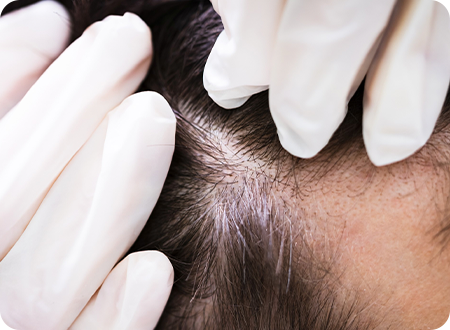
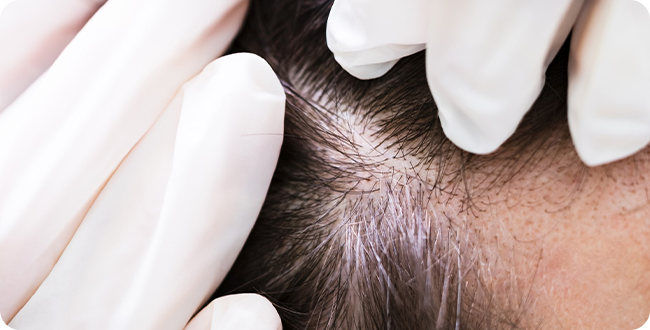
The elasticity of the scalp is measured to determine the optimal hori-
Zontal and vertical dimensions of the donor area for follicle extraction.
The elasticity of the scalp is measured to
determine the optimal horiZontal and vertical
dimensions of the donor area for follicle
extraction.
Hair density and strand thickness are analyzed to help design the
donor area and ensure effective and balanced graft harvesting.
Hair density and strand thickness are analyzed
to help design the donor area and ensure
effective and balanced graft harvesting.
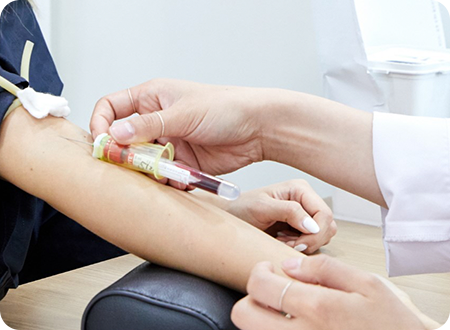
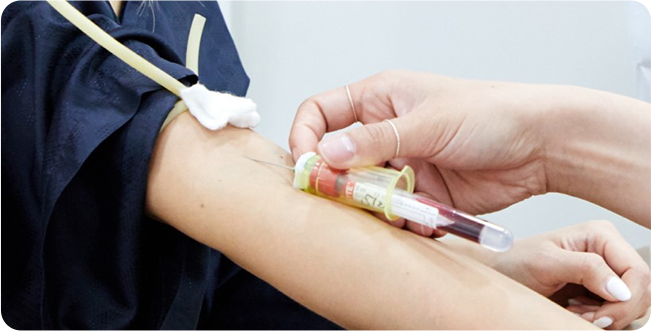
Liver, kidney function, blood glucose levels, electrolyte balance,
blood coagulation, CBC (Complete Blood Count), Vitamin D levels,
thyroid function tests (TSH and fT4), LDL and TG levels are tested.
For individuals with a history of anemia, additional tests such as
serum ferritin may be conducted along with the CBC.
PSA (Prostate-Specific Antigen) testing is recommended for men
over the age of 45. For women with a history of gynecological con-
ditions, tests for polycystic ovary syndrome (PCOS) and endome-
triosis are recommended.
Liver, kidney function, blood glucose levels,
electrolyte balance, blood coagulation, CBC
(Complete Blood Count), Vitamin D levels,
thyroid function tests (TSH and fT4), LDL and
TG levels are tested. For individuals with a
history of anemia, additional tests such as
serum ferritin may be conducted along with
the CBC.
PSA (Prostate-Specific Antigen) testing is
recommended for men over the age of 45.
For women with a history of gynecological
conditions, tests for polycystic ovary
syndrome (PCOS) and endometriosis are recom-
mended.
Hair Transplant Medication Prescription
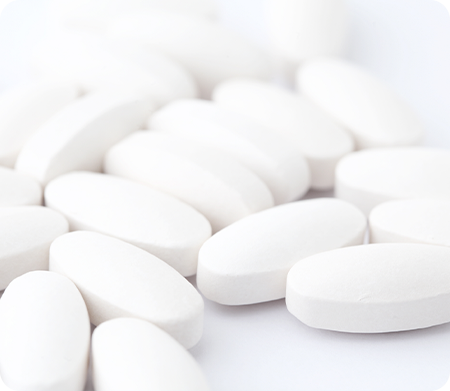
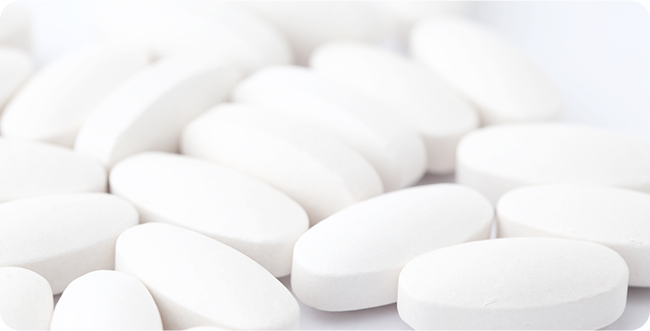
Medication Guidelines for Male Pattern Hair Loss: Finasteride (e.g., Pro-
pecia, Finon) is prescribed on the day of surgery and should be taken
consistently. Dutasteride may be prescribed if needed.
Medication Guidelines for Male Pattern Hair
Loss: Finasteride (e.g., Propecia, Finon) is pre-
scribed on the day of surgery and should be
taken consistently. Dutasteride may be pre-
scribed if needed.
– If already taking hair loss medication: continue as usual.
– Topical Minoxidil should be stopped 3-4 days before surgery and resumed 1
**month after surgery.
– If already taking hair loss medication:
**continue as usual.
– Topical Minoxidil should be stopped 3-4 days
**before surgery and resumed 1 month after
**surgery.
* What is
* Finasteride? Finasteride is FDA-approved for treating male pattern
baldness and enlarged prostate. The other FDA-ap-
proved hair loss treatment is topical Minoxidil.
* What is Finasteride? Finasteride is FDA-approved for treating male pattern
baldness and enlarged prostate. The other FDA-ap-
proved hair loss treatment is topical Minoxidil.
VIEW HAIR TRANSPLANT
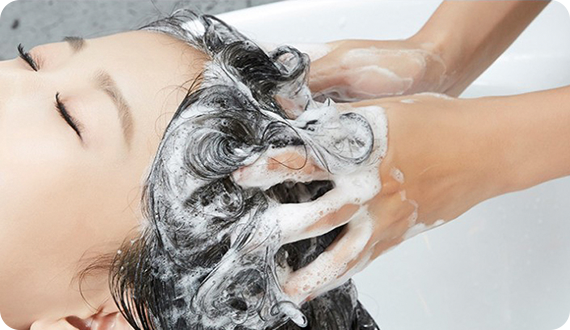
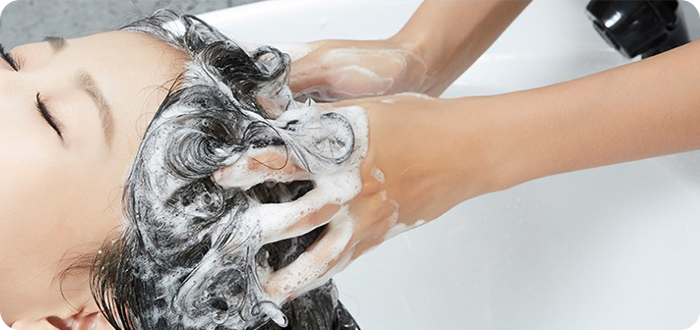
It takes about 3 weeks for transplanted hair to fully settle. Scabs may begin to fall
off naturally between Day 10 to 15. Do not scratch or forcibly remove scabs, as it
can interfere with graft survival or cause scarring.
It takes about 3 weeks for the transplanted graft
to fully settle. During this time, scabs will naturally
fall off–do not pick or scratch them, as this may
affect graft survival.
. Shampoo & Scab Care (after 2 Weeks)
1. Soak the graft area with lukewarm water to soften scabs.
2. Apply shampoo foam and gently massage using your fingertips in a circular motion.
3. Avoid forceful rubbing–let scabs shed naturally.
1. Soak the graft area with lukewarm water to
**soften scabs.
2. Apply shampoo foam and gently massage using
**your fingertips in a circular motion.
3. Avoid forceful rubbing–let scabs shed naturally.
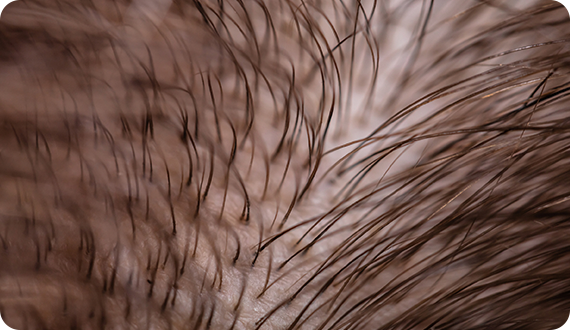

If you received an incisional hair transplant (FUT), stitch removal will be
performed during this period. The donor and recipient areas may still appear
reddish, as the scalp has not fully regenerated. This redness typically fades
gradually over time, improving between 3 months to 1 year depending on
individual healing.
If you underwent an incisional hair transplant
(FUT), stitch removal is performed during this
period. The donor and recipient areas may still
show redness, which is normal. This redness grad-
ually fades and typically improves over 3 months
to 1 year depending on individual healing.
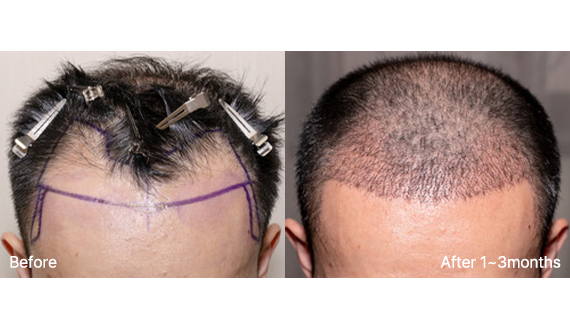

This period is often referred to as the “dormant phase.”
The transplanted area may still show redness, and folliculitis (inflammation)
can occur during this time. Proper scalp care is essential. If folliculitis
develops, additional dressing and oral antibiotics may be required.
This period is often referred to as the “shedding”
or “dormant phase.” The transplanted area may still
show redness, and folliculitis (inflammation of the
hair follicles) may occur. Careful scalp hygiene is
essential. If folliculitis develops, additional dressing
and oral antibiotics may be required.


The transplanted hair begins to grow during this stage.
Some patients may still feel mild discomfort or sensitivity in the donor area
(back of the head), which is a normal part if healing.
This discomfort gradually improves over time.
The transplanted hair begins to grow during this
stage. Some patients may still feel mild discomfort
or sensitivity in the donor area (back of the head),
which is a normal part if healing.
This discomfort gradually improves over time.


By around 7 months, the transplanted hair typically grows to about 5-7 cm.
From this point on, the new hair begins to blend naturally with surrounding hair
and grows in a healthy, stable manner. You will see a noticeable improvement
compared to your pre-surgery appearance.
By around 7 months, the transplanted hair typically
grows to about 5-7 cm. From this point onward, it
continyes to grow naturally and blend in with the
surrounding hair. You will notice a significant im-
provement compared to your appearance before
surgery.
VIEW Plastic Surgery
BEFORE & AFTER
VIEW Hair Transplant
Naturally restores and corrects
areas of concern with seamless,
natural-looking results.
VIEW Hair Transplant
Naturally restores and corrects areas of
concern with seamless, natural-looking results.









Address
107, Bongeunsa-ro, Gangnam-gu, Seoul, Korea (201-14 Nonhyeon-dong)
Nearest Subway Station: Sinnonhyeon Station, Line 9
107, Bongeunsa-ro, Gangnam-gu, Seoul, Korea
(201-14 Nonhyeon-dong)
Nearest Subway Station: Sinnonhyeon Station, Line 9
Working
hours
Weekday : AM 10:00 – PM 7:00
Friday : AM 10:00 – PM 9:00 (Late Treatment)
Saturday : AM 10:00 – PM 5:00
Tel.
02-539-1177
VIEW is recognized
worldwide
View Plastic Surgery's medical technology,
professional medical staff,
and safety systems are recognized worldwide
Clients from all over the world visit View Plastic Surgery.














There may be complications such as bleeding, infection, and inflammation after surgery. Subjective satisfaction may vary between individuals.
Address: 107, Bongeunsa-ro, Gangnam-gu, Seoul, Korea (201-14 Nonhyeon-dong)
Tel : +82-2-539-1177 | Fax : 02-539-1132
Business Name : View Plastic Surgery | CEO : Choi Soon Woo | License No. : 220-08-86777
ⓒ Copyright COPYRIGHT©2017 View Plastic Surgery. ALL RIGHTS RESERVED.


*Image Model